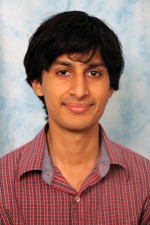
1:00 pm to 2:00 pm
GHC 8102
Abstract:
Active illumination systems use a controllable light source and a light sensor to measure properties of a scene. For such a system to work reliably across a wide range of environments it must be able to handle the effects of global light transport, bright ambient light, interference from other active illumination devices, defocus, and scene motion.
The goal of this thesis is to develop computational techniques and hardware arrangements to make active illumination devices based on commodity-grade components that work under real world conditions. We aim to combine the robustness of a scanning laser rangefinder with the speed, measurement density, compactness, and economy of a consumer depth camera.
Towards this end, we have made four contributions. The first is a computational technique for compensating for the effects of motion while separating the direct and global components of illumination. The second is a method that combines triangulation and depth from illumination defocus cues to increase the working range of a projector-camera system. The third is a new active illumination device that can efficiently image the epipolar component of light transport between a source and sensor. The device can measure depth using active stereo or structured light and is robust to many global light transport effects. Most importantly, it works outdoors in bright sunlight despite using a low power source. Finally, we extend the proposed epipolar-only imaging technique to time-of-flight sensing and build a low-power sensor that is robust to sunlight, global illumination, multi-device interference, and camera shake.
We believe that the algorithms and sensors proposed and developed in this thesis could find applications in a diverse set of fields including mobile robotics, medical imaging, gesture recognition, and agriculture.
Thesis Committee Members:
Srinivasa G. Narasimhan, Chair
Simon Lucey
William L. “Red” Whittaker
Wolfgang Heidrich, KAUST and University of British Columbia
Kiriakos N. Kutulakos, University of Toronto
